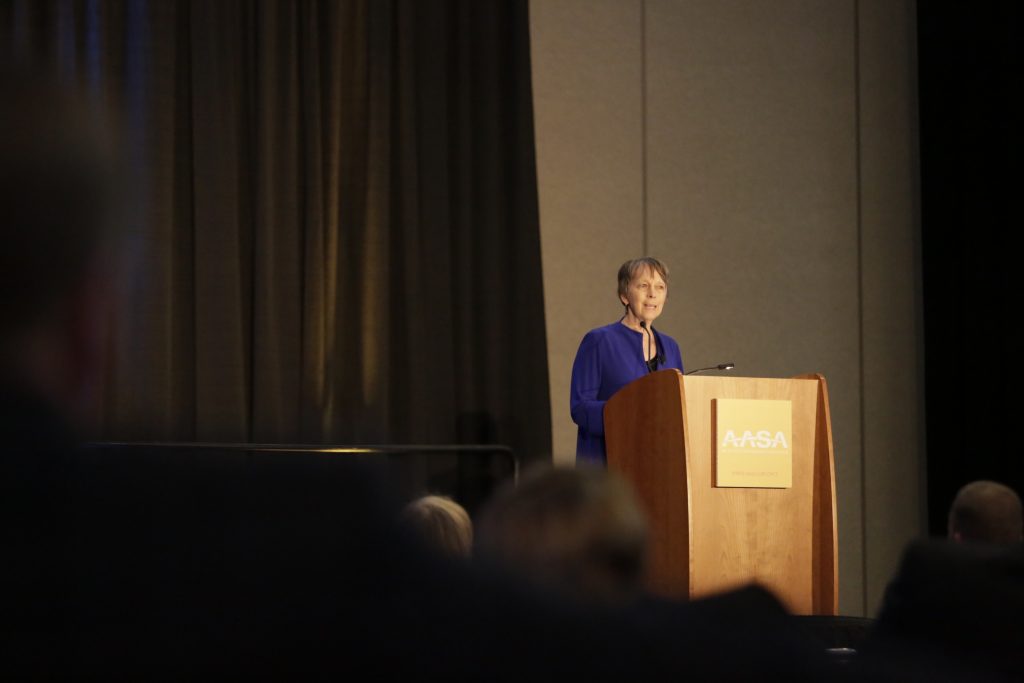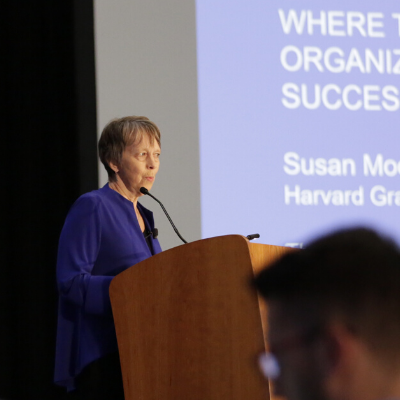Teachers are often extolled as the most important people on campus. They are mentors and role models, creators of new generations of educated citizens. But teachers themselves are not created equal. Some are good, some are not and the question for investigators like Susan Moore Johnson, a research professor at Harvard Graduate School of Education, is why do some teachers thrive and their students succeed and others do not?
In the Friday afternoon Thomas Sobol Lecture at the AASA national conference in San Diego, Johnson briefly described findings from her latest book, “Where Teachers Thrive: Organizing Schools for Success.” From 2008 to 2015, Moore and colleagues looked in depth at 14 low-income urban school districts. Some had achieved academic excellence; some wallowed in chronic failure.
Her first finding was that success does not hinge upon individual teacher performance. In the early 2000s, she noted, policy makers decided the path to improved schools was to get rid of “bad teachers,” primarily based upon their students’ standardized test scores. But a 2018 Rand study found that the constant purging of perceived low-performing teachers did not result in improved graduation rates, higher test scores or any other measure of quality.
The lesson was clear: “It’s essential to pay attention to individual teachers, but they are just part of the solution. The bigger part is the whole school culture. If that isn’t improved, nothing improves.”
Teaching, she said, is a largely solitary endeavor. Teachers work semi-autonomously and often innovate by themselves, limiting improvement to just their classroom and students. Johnson said schools where teachers thrive are schools where teachers are partners with administrators.
“Inclusive school leadership means principals seek teacher input and truly partner with them to find solutions, in everything from hiring to budgets to evaluations. These principals know that teachers understand some things better than they do, and they take advantage of that fact.”
A second key factor is that in successful, thriving schools, teachers and administrators have developed in-house systems for working together. Processes are created internally, not mandated by the district office or external entity. They do what works for them.
Johnson cited three examples of successful teacher-administrator partnerships:
- New teacher hires involve both administrators and current teachers, with multiple interviews, site visits and demonstration lessons.
- Teacher teams are formed, with inviolable times for gathering to share information, best practices and to plan. Administrators are engaged. They are kept informed of what teams are doing, but they do not micromanage.
- Teacher evaluations are regular and frequent, often occurring every few weeks. Most are informal, with immediate feedback, junior and senior teachers alike. They are designed for development, not dismissal. Bad teachers, said Johnson, tend to get weeded out quickly, though most never get through the initial hiring process.
All three examples are mutually reinforcing and all, said Johnson, can be seen in schools where administrators and teachers were true partners in the success of their students.
(Scott LaFee is media relations director with UCSD Health in San Diego.)


